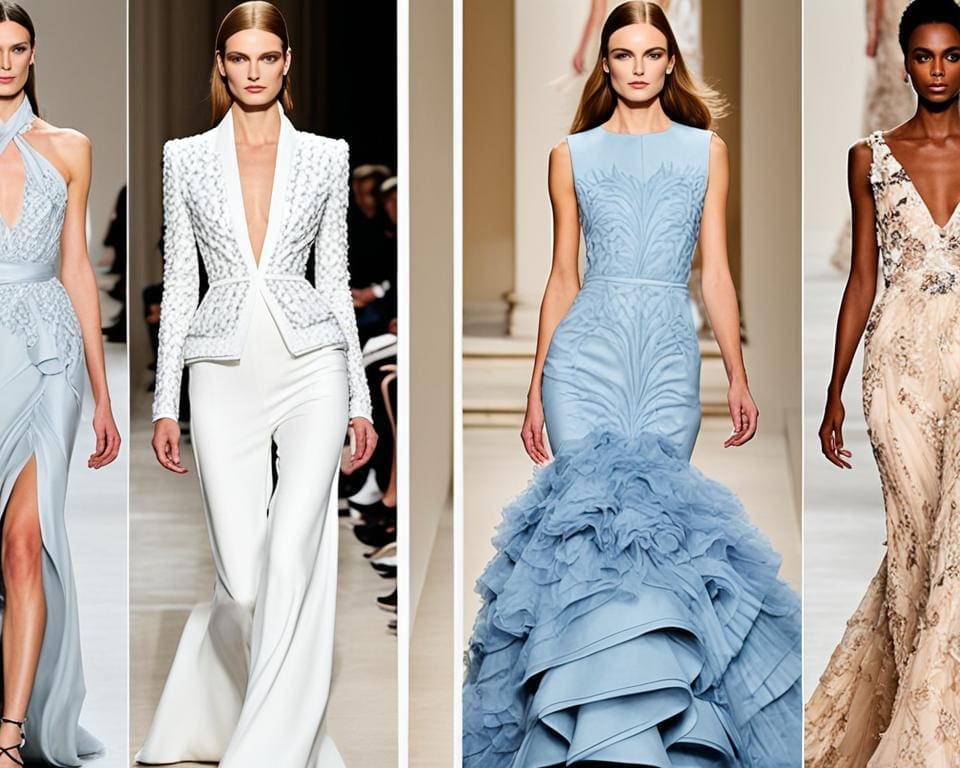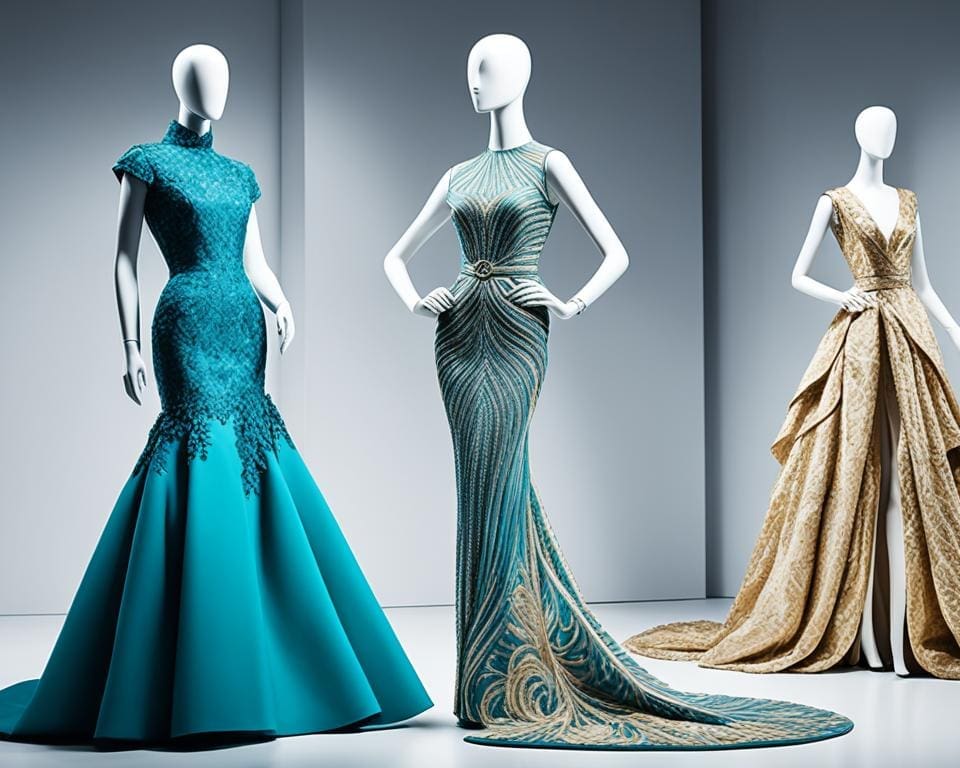In the world of fashion, haute couture and ready-to-wear are vastly different. Haute couture is the height of luxury fashion. It’s known for its outstanding craftsmanship. Some pieces can take up to 2000 hours of careful, handmade work.
Haute couture is art and exclusivity mixed together. It’s mostly for those with deep pockets, like celebrities and royalty. On the other hand, ready-to-wear clothes are more accessible. They are mass-produced in standard sizes. This type uses both natural and synthetic materials.
Ready-to-wear offers options from affordable to very expensive. This shows the balance between high fashion and being available to many. Knowing the differences between them is key. This article will explain more about haute couture and ready-to-wear. We’ll look into their costs and impacts on fashion.
Defining Haute Couture and Ready-to-Wear Fashion
Fashion is alive with different styles, ready to meet everyone’s likes. It explores two main types: Haute Couture and Ready-to-Wear. These categories show the creativity in Couture Fashion and the ease of getting Designer Clothing.
What is Haute Couture?
Haute Couture means ‘high sewing’ in French, highlighting fashion’s finest. It began with the Chambre Syndicale de la Haute Couture in 1868, ensuring high standards. Each piece is made just for one client, with a focus on superb skill.
The creation of Haute Couture takes a lot of time, making it very pricey. Top names like Chanel, Dior, and Givenchy are big in this elite field. The price for these outfits can be more than £90,000.
What is Ready-to-Wear?
Ready-to-Wear became big in the 1960s, thanks to Yves Saint Laurent. This fashion type offers clothes in common sizes, making high fashion more reachable. Unlike Haute Couture, Ready-to-Wear items mix quality design with being more widely available.
A Ready-to-Wear item usually needs 50 to 100 hours to make. This ensures craftsmanship while staying efficient. Designers such as Marc Jacobs and Stella McCartney have made notable contributions, bringing high fashion closer to daily wear.

Haute Couture vs. Ready-to-Wear: What’s the Difference?
The fashion world is always changing. It is important to know the difference between haute couture and ready-to-wear. The key differences are how accessible and expensive they are, and how they are made. Each plays a unique role in fashion trends today.
Accessibility and Pricing
How much clothes cost affects who can buy them. Ready-to-wear clothes are more affordable for more people. You can find t-shirts for about £5 or special designer outfits for more than £3,000. This makes it easier for people to follow fashion trends. On the other hand, haute couture is for the very rich or famous, with prices starting at $90,000.
Big fashion brands like Chanel and Dior sell both haute couture and ready-to-wear. This strategy helps them make more money and reach more customers. They show their ready-to-wear lines at big fashion shows. Even though not many buy haute couture, ready-to-wear is everywhere in shops.
Production Techniques
What makes haute couture special is how it’s made. It takes about 300 hours to make one piece because of the detailed work. Ready-to-wear is faster to make, needing 50 to 100 hours. The fast fashion trend started in Britain in the 1860s.
Fashion houses work hard to make both haute couture and ready-to-wear. They use quick ways to make ready-to-wear so they can keep up with what people want. This helps them stay important in fashion while being creative with new designs.
Impact on the Fashion Industry
Haute couture has a big impact on fashion, beyond just being exclusive. Only about two thousand people buy these unique pieces worldwide. Yet, it’s key for sparking creativity and stands as a symbol of couture innovation. Craftsmen may spend around 300 hours making one piece, which could cost over $90,000. This sets a high standard that influences all of fashion. It helps ready-to-wear collections to be innovative and set new trends for more people.
High Fashion Influence trickles down to ready-to-wear collections, showing a vital connection. Consumer preferences guide and reshape fashion. Ready-to-wear takes less time to make—50 to 100 hours and costs much less. It appeals to a wider range of people. This sector’s growth is significant, allowing brands to reach many while keeping high style standards first seen in couture.
Furthermore, diffusion lines create a mix of luxury and everyday wear. They make fashion from famous brands more affordable. As fashion evolves, the link between haute couture and ready-to-wear pushes for new ideas. It keeps fashion exciting for everyone, not just the very wealthy.









